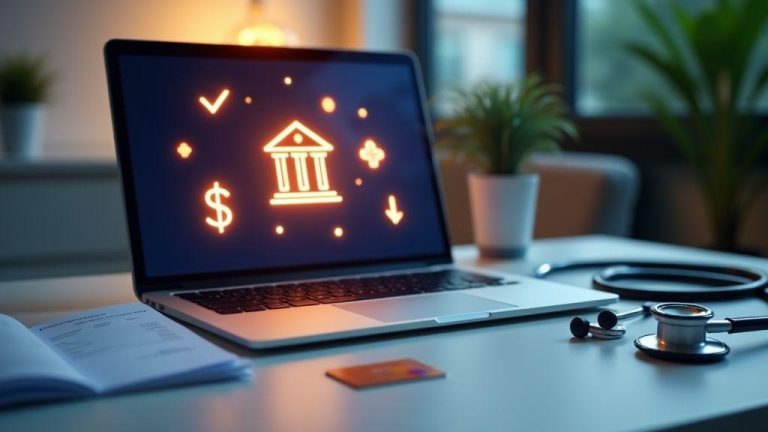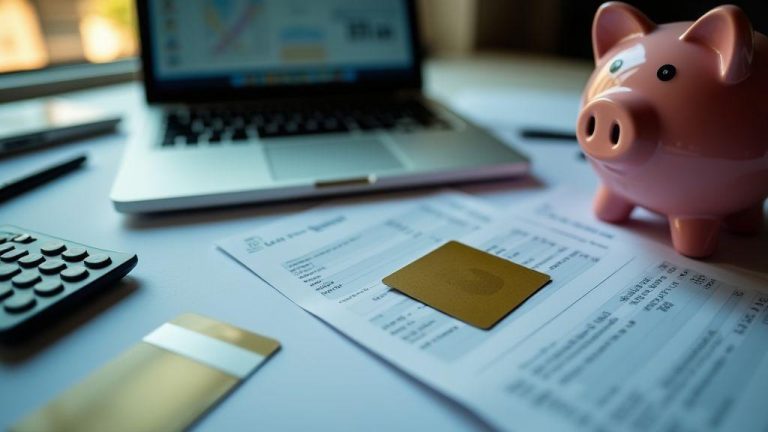You need simple facts fast. This short guide shows how interest and fees compare, what penalties to watch, key cost checks before you borrow, how repayment works, and how your credit score can change. You’ll get steps to protect your credit, tips on when to use a loan or a card, and quick pros and cons to help you decide.
How interest and fees differ between a personal emergency loan and a credit card for you
A personal emergency loan usually gives you a fixed amount at one APR and a set payment plan. You borrow a lump sum and pay it back over months or years. That fixed schedule makes it easier to see the total cost and plan your budget.
A credit card is a revolving line you can tap into repeatedly, up to your limit. If you carry a balance, interest can pile up fast because cards often have higher APRs and compound daily. If you pay the full balance each month you may pay little or no interest, but that depends on the card’s grace period.
Fees differ too. Personal loans may charge origination fees or, rarely, early-payoff penalties. Credit cards charge late fees, cash-advance fees, and sometimes annual fees. Those small charges can add up, so check the full price, not just the headline rate.
2 The difference between a personal emergency loan and a credit card in plain terms you can use
A clear line to remember: 2 The difference between a personal emergency loan and a credit card is how you borrow and how you pay it back. With a personal loan, you get a set sum and a fixed monthly bill. With a card, you borrow as you spend and you can carry a balance month to month.
Think of the loan as a straight road to the finish line and the card as a loop you can circle. Loans give predictability; cards give flexibility. If you need one big payment for a repair or medical bill, a loan often costs less. If you can pay off the charge immediately, a card can be quicker.
Fees and penalties to watch
- For loans: origination fees (reduce what you receive), prepayment penalties (rare), late and returned payment fees.
- For cards: cash-advance fees, late fees, penalty APRs, annual fees, and balance-transfer fees.
Small penalties make a big dent over time. Compare total cost and worst-case scenarios before you sign.
Key cost checks before you borrow
Check the APR, origination/annual fees, late and prepayment penalties, billing cycle and grace period, and whether the rate is fixed or variable.
How repayment terms and credit score change when you choose a loan or card
A personal loan gives you a set amount, a fixed monthly payment, and a clear end date. A credit card is a revolving line: you pay a minimum or more, and the balance can linger month to month with interest compounding.
A loan can improve your credit mix and build positive payment history if you pay on time, though a new loan triggers a hard inquiry that may dip your score briefly. A card affects your utilization—the percentage of available credit you use—so high balances hurt quickly even if payments are on time.
For a quick rule: 2 The difference between a personal emergency loan and a credit card is about fixed versus revolving payments, and that shapes your score path.
Repayment terms: personal loan vs credit card and how you plan monthly payments
With a personal loan you get a set monthly bill, making budgeting easier. The loan usually has a fixed interest rate and term, so surprises are rare.
Credit cards give flexibility but risk: paying the minimum lowers today’s pain but stretches the debt and increases total interest. Set a target payment that beats the minimum and keep utilization below about 30% to limit score damage.
Impact on credit score: what you can expect
- Personal loan: may raise your score over time by improving credit mix and creating on-time payment history.
- Credit card: affects score primarily via utilization and payment history. Low balances and on-time payments can raise your score faster, but high utilization drags it down.
Steps to protect your credit after emergency borrowing
- Set up automatic payments to avoid missed due dates.
- Pay more than the minimum on cards or add a small extra to loan payments.
- Cut nonessential spending until the debt falls.
- Check your credit report after the emergency for errors or fraud.
- Contact lenders about hardship plans if needed — if you need to discuss options, contact our team for guidance.
When to use each option and how much you can borrow in an emergency
Pick the tool that fits the job. Use a credit card for small, fast costs—like a $200 vet bill or a $600 urgent car fix—because the money is immediate. Use a personal loan for larger, one-off bills—like a $5,000 medical bill or a $12,000 roof repair—because loans often offer lower rates and fixed payments if your credit is good.
How much you can borrow depends on the product and your credit:
- Credit card limits commonly range from a few hundred to tens of thousands ($1,000–$10,000 is common).
- Unsecured personal loans typically start around $1,000 and can go up to $25,000–$50,000 with prime lenders.
- Secured loans (home equity, auto-title) can be much higher at lower rates because of collateral.
If you search “2 The difference between a personal emergency loan and a credit card” you’ll see the same rule: size and time frame guide your choice.
When to use a personal loan instead of a credit card for your emergency
Use a personal loan when the bill is large and you want steady, predictable payments. Loans can lower monthly strain and reduce credit utilization if you consolidate balances. The trade-offs: loans may take longer to fund and can include origination fees or require collateral for higher amounts.
Loan amount versus credit card limit for emergencies; secured vs unsecured
Credit cards are flexible but limited by issuer rules and credit history. If your limit is $2,000 and the emergency is $5,000, a card won’t work without juggling charges or requesting an increase. Personal loans can bridge that gap. Secured loans let you borrow more at lower rates but put an asset at risk. Unsecured loans avoid collateral but may cost more.
Quick pros and cons: personal emergency loan vs credit card
- Personal loans:
- Pros — predictable payments, often lower APR for larger amounts, single payment to manage.
- Cons — slower funding, possible origination fees, potential collateral requirement.
- Credit cards:
- Pros — instant access, rewards, and grace period if paid in full.
- Cons — higher variable rates if you carry a balance, risk of maxing out limits, and daily compounding interest.
Choose by comparing total cost, time to funding, and what you can handle month to month.
Quick reminder: 2 The difference between a personal emergency loan and a credit card
- Loan = lump sum, fixed payments, predictable payoff.
- Card = revolving access, instant spending, flexible but riskier if balances remain.
Conclusion
Keep it simple: a personal loan gives you a lump sum, fixed payments, and clearer total cost. A credit card gives revolving credit, instant access, and flexibility—but watch the APR, daily compounding, and utilization.
Think of a loan as a straight road and a card as a loop. For big, one-off bills pick the loan. For small, fast fixes use the card—only if you can pay it off quickly. Before you sign, check the APR, origination or annual fees, prepayment penalties, and the grace period. Protect your credit with autopay, paying more than the minimum, and keeping balances under about 30% of your limit.
Frequently asked questions
Q: What is 2 The difference between a personal emergency loan and a credit card?
A: A loan gives you a lump sum with fixed payments. A credit card gives a revolving limit you use again and again.
Q: Which one costs you more in interest?
A: Credit cards often have higher rates, especially for carried balances. Loans can have lower fixed rates for larger amounts.
Q: Which is faster when you need cash now?
A: Credit cards are instant for purchases. Loans can fund the same day with some online lenders, but banks may take a few days.
Q: Which one helps or hurts your credit score more?
A: Loans can help by diversifying credit and building on-time history. High credit card balances can hurt your score quickly due to utilization.
Q: When should you pick a personal emergency loan over a credit card?
A: Pick a loan for big, one-time bills or debt consolidation. Use a card for small, short-term needs you can repay quickly.



